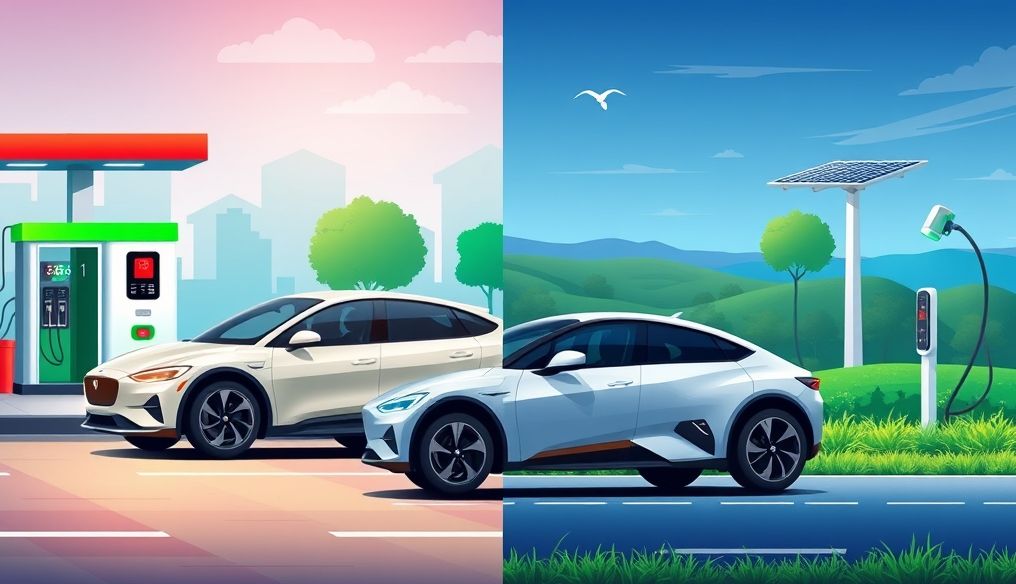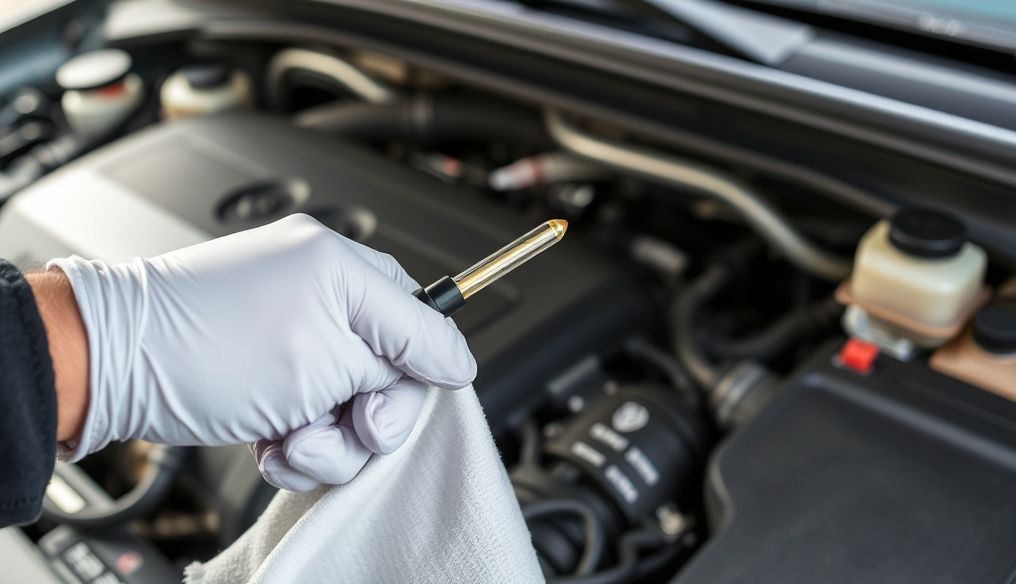What are the differences between Hybrid and Electric cars, and which is right for you?
With increasing environmental awareness and rising fuel prices, environmentally friendly cars have become an attractive option for many. However, when looking for traditional alternatives, consumers face two main choices: Hybrid cars and all-electric cars (Electric Vehicles - EV). Both types offer environmental and economic benefits, but the differences between them are fundamental. This article will break down these differences and help you determine the option that best suits your needs and lifestyle.
Chapter 1: Basics of Hybrid Cars
What is a Hybrid Car?
A hybrid car is a vehicle that combines a traditional internal combustion engine (running on gasoline or diesel) with an electric motor and battery. The goal of this combination is to improve fuel efficiency and reduce emissions. There are different types of hybrid cars, each with a different way of working:
- Mild Hybrid: Primarily uses the electric motor to assist in starting the engine and reducing stress on it, which slightly improves fuel efficiency. These cars cannot be driven relying solely on electric power.
- Full Hybrid: These cars can be driven relying solely on the electric motor for short distances at low speeds. The electric motor can charge the battery while driving or braking.
- Plug-in Hybrid: Similar to a full hybrid, but its battery can be charged by connecting it to an external power source. This allows for a longer range of driving relying solely on electric power.
How does a Hybrid Car work?
A hybrid car works by switching between the electric motor and the internal combustion engine, or using them together. The car's computer system automatically decides when to use each engine based on factors such as speed, acceleration, and battery charge status. During braking, the hybrid car uses a regenerative braking system to convert kinetic energy into electrical energy and store it in the battery.
Pros and Cons of Hybrid Cars
Pros:
- Fuel Efficiency: Hybrid cars offer significantly better fuel efficiency than traditional cars.
- Lower Emissions: Hybrid cars produce fewer greenhouse gas emissions.
- No need to change driving habits: Hybrid cars do not require a significant change in driving habits, as they still rely on the internal combustion engine for long-distance driving.
- Available Infrastructure: Hybrid cars do not need a special charging infrastructure, as they can be fueled at any gas station.
Cons:
- Price: Hybrid cars are usually more expensive than traditional cars.
- Complex Maintenance: Hybrid cars require more complex maintenance due to the presence of two different drive systems.
- Battery: The hybrid car's battery needs to be replaced after a certain period, which adds to the maintenance cost.
Chapter 2: Basics of All-Electric Cars
What is an All-Electric Car?
An all-electric car is a vehicle that relies entirely on electric power to operate. It does not have an internal combustion engine and relies on a large battery to store electrical energy. The battery can be charged by connecting it to an external power source.
How does an All-Electric Car work?
An all-electric car works by converting the electrical energy stored in the battery into kinetic energy that drives the wheels. The electric motor provides instant torque, providing fast and smooth acceleration. As with hybrid cars, all-electric cars use a regenerative braking system to convert kinetic energy into electrical energy and store it in the battery during braking.
Pros and Cons of All-Electric Cars
Pros:
- Zero Emissions: All-electric cars produce zero greenhouse gas emissions during operation.
- Low Running Cost: The cost of electricity is much lower than the cost of fuel, saving money in the long run.
- Less Maintenance: All-electric cars require less maintenance than traditional cars, as there is no internal combustion engine or complex transmission.
- Enjoyable Driving Experience: All-electric cars offer a smooth and quiet driving experience with instant acceleration.
Cons:
- Limited Range: The driving range of all-electric cars is still limited compared to traditional cars, although it is constantly improving.
- Charging Time: Charging an all-electric car's battery takes longer than fueling a traditional car.
- Charging Infrastructure: The charging station infrastructure is still not widely available in some areas.
- Price: All-electric cars are usually more expensive than traditional cars.
Chapter 3: Direct Comparison between Hybrid and All-Electric Cars
| Feature | Hybrid Cars | All-Electric Cars |
|---|---|---|
| Power Source | Internal Combustion Engine and Electric Motor | Electric Motor Only |
| Emissions | Lower emissions than traditional cars | Zero emissions during operation |
| Fuel/Energy Efficiency | Better than traditional cars | Most efficient |
| Range | Longer than all-electric cars | Shorter than hybrid cars, but constantly improving |
| Charging/Refueling Time | Refueling is faster than charging an electric car | Charging time is longer than refueling |
| Infrastructure | Relies on the infrastructure of gas stations | Relies on the infrastructure of charging stations |
| Price | More expensive than traditional cars, but less than all-electric cars | Most expensive |
| Maintenance | More complex than traditional cars | Less complex than traditional cars |
Chapter 4: Factors to Consider When Choosing
When choosing between a hybrid car and an all-electric car, there are several factors to consider:
- Budget: All-electric cars are usually more expensive than hybrid cars.
- Driving Needs: If you drive long distances regularly, a hybrid car may be a better option due to its longer range. If you mostly drive within the city, an all-electric car may be sufficient.
- Availability of Charging Stations: Make sure there are charging stations near your home or work if you are considering buying an all-electric car.
- Environmental Awareness: If you are committed to minimizing carbon emissions, an all-electric car may be the best option.
- Government Incentives: Check for government incentives available for buying hybrid and electric cars in your area.
Chapter 5: Future Technology for Hybrid and Electric Cars
The hybrid and electric car sector is experiencing continuous advancements in technology. Batteries are expected to see significant improvements in energy density and charging speed, increasing the range of electric cars and reducing charging time. The development of charging station infrastructure will also make electric cars more attractive to consumers. In addition, new technologies are being developed to improve the efficiency of electric motors and internal combustion engines, which will improve the performance of hybrid cars and reduce their emissions.
Chapter 6: Environmental and Economic Impact
The transition to hybrid and electric cars is an important step towards a more sustainable future. These cars reduce dependence on fossil fuels, reduce greenhouse gas emissions, and improve air quality in cities. In addition to the environmental benefits, hybrid and electric cars can have a positive economic impact. They can save money in the long run by reducing fuel and maintenance costs. The development and manufacturing of these cars also creates new jobs in the clean energy sector.
Chapter 7: Tips for Maintaining Your Hybrid or Electric Car
To keep your hybrid or electric car in top condition, there are some tips to follow:
- Regular Maintenance: Follow the maintenance schedule recommended by the manufacturer.
- Battery Check: Check the car's battery regularly to make sure it is working properly.
- Economical Driving Style: Avoid sudden acceleration and braking to increase fuel or energy efficiency.
- Proper Charging: Follow the manufacturer's instructions for charging the electric car's battery.
- Car Storage: If you plan to store the car for a long time, make sure the battery is charged to a certain level.
Chapter 8: The Future of Sustainable Mobility
Hybrid and electric cars represent an essential part of the future of sustainable mobility. With continued technological advancements and increasing environmental awareness, these cars are expected to become more popular. In addition, other sustainable mobility solutions are being developed, such as hydrogen-powered cars, electric bikes, and electric public transport. All of this aims to reduce dependence on fossil fuels and create a cleaner and more sustainable future for generations to come.
Conclusion
Hybrid and all-electric cars represent promising alternatives to traditional cars. The best option depends on your needs, budget, and lifestyle. If you are looking for better fuel efficiency and lower emissions without a significant change in driving habits, a hybrid car may be the best option. If you are committed to minimizing carbon emissions and want a smooth and quiet driving experience, an all-electric car may be the best option. Regardless of your choice, the transition to hybrid and electric cars contributes to a more sustainable future.




